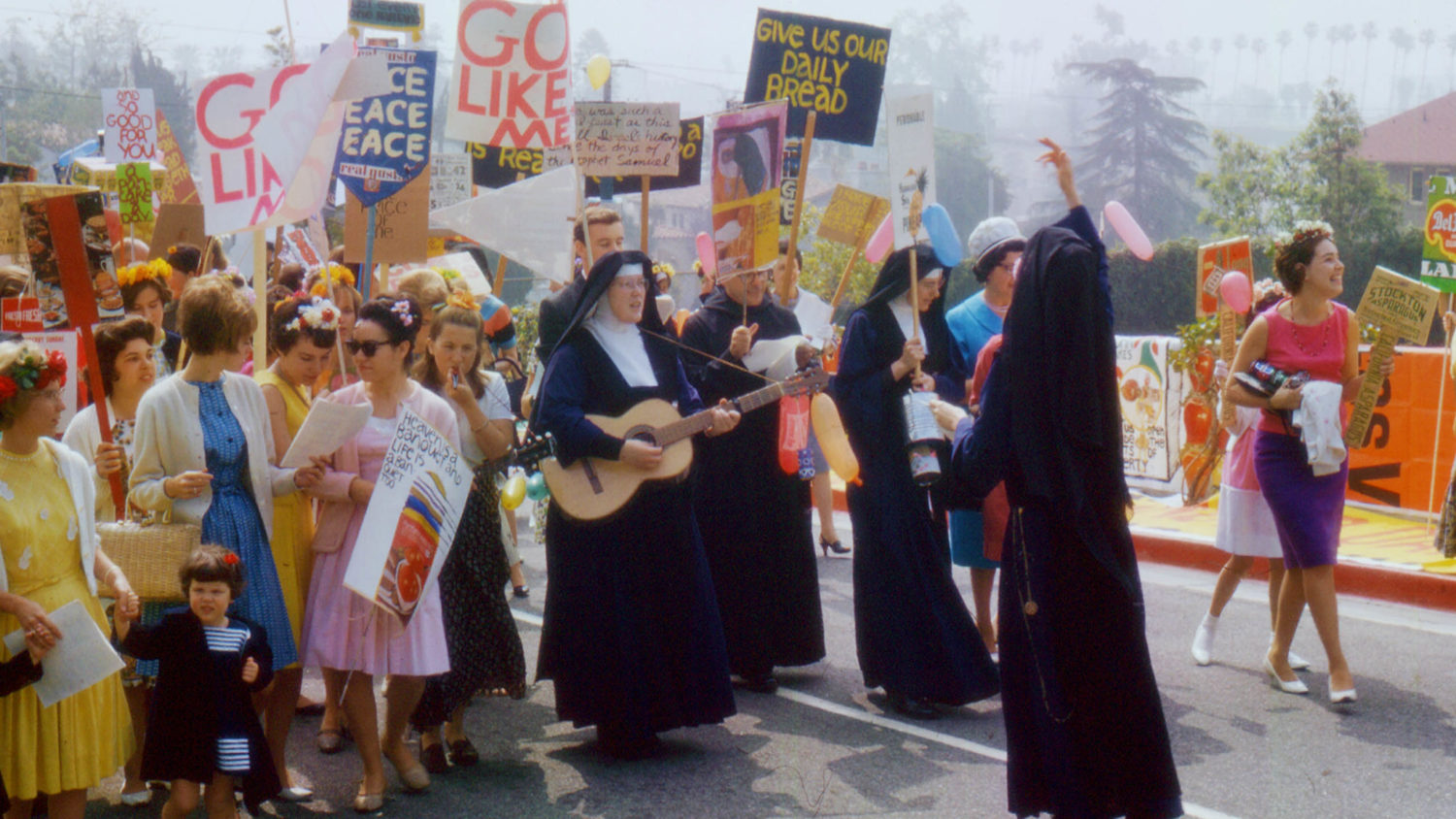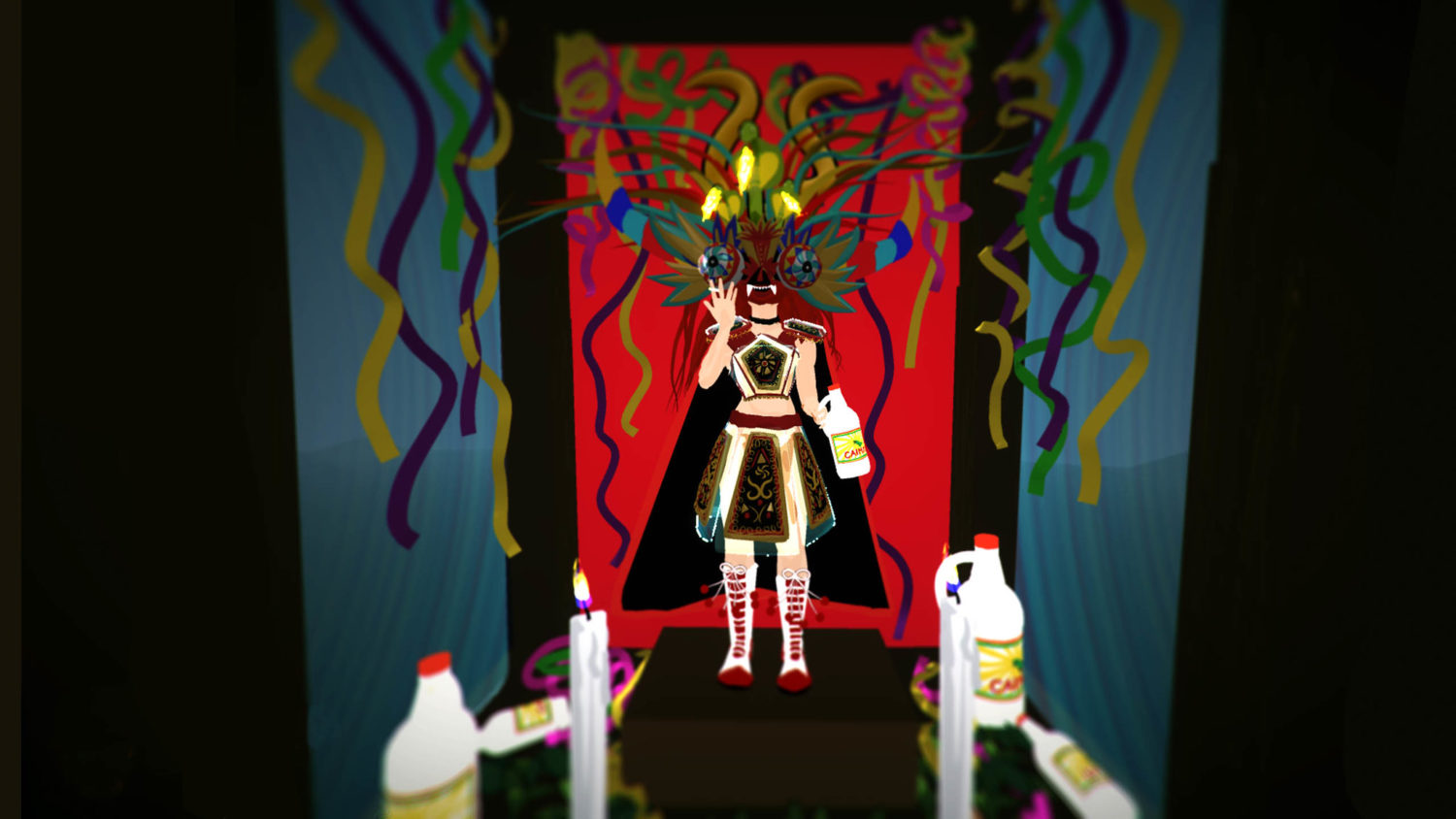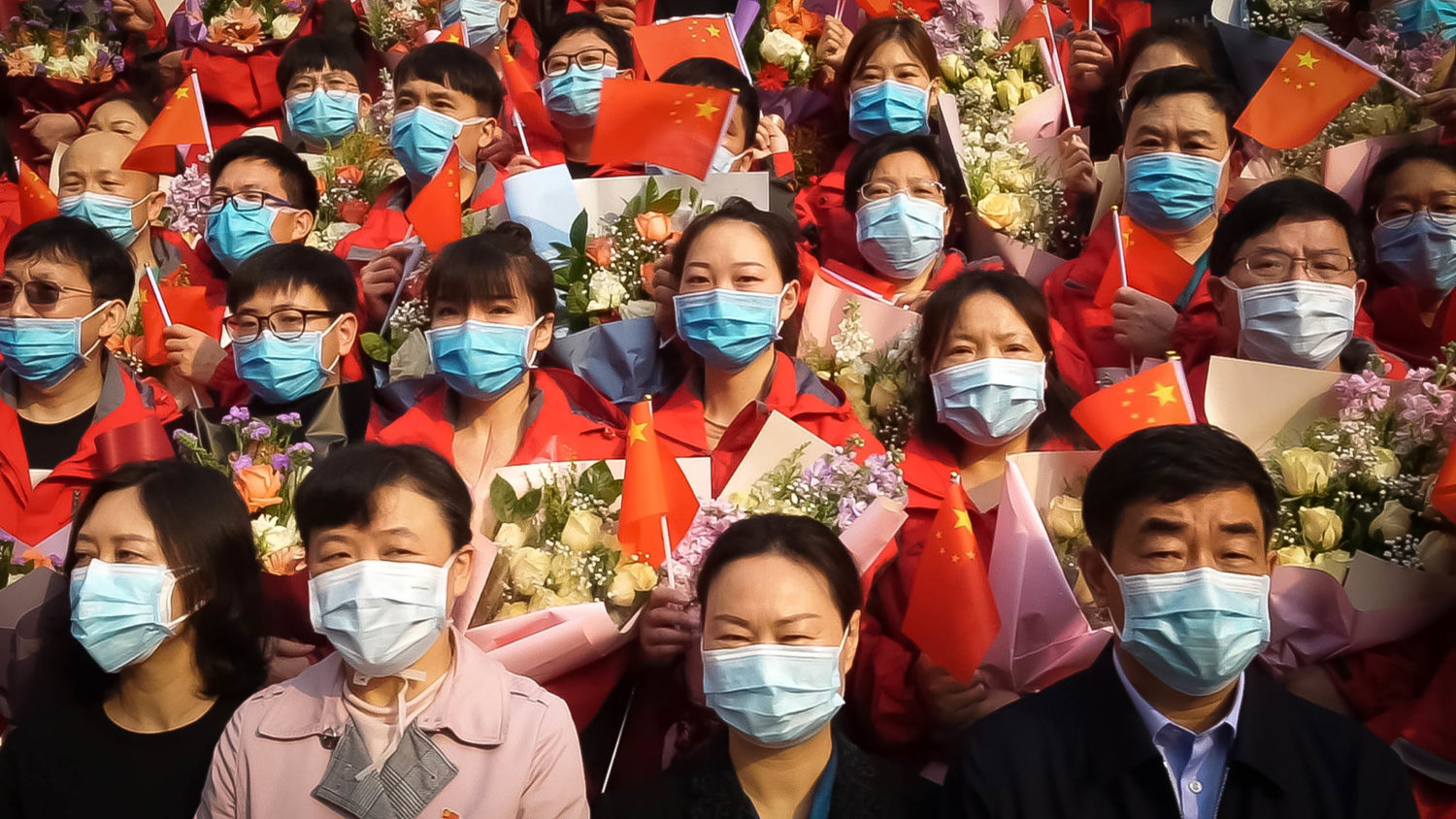Few docs stick it to the Patriarchy as well as Rebel Hearts does. This portrait of the courageous efforts of the Sisters of the Immaculate Heart of Mary (IHM) looks at how one group of dedicated women fought for change in a time of revolution. The film, which premieres this week at the Sundance Film Festival, highlights the efforts of Los Angeles-based nuns like Corita Kent, Anita Caspary, Helen Kelley, Lenore Dowling, and Pat Reif who defied their shepherd by fighting for their flock. It tells how they confronted the Catholic Church’s unyielding effort to uphold antiquated traditions for tradition’s sake. At a time when the women’s movement and civil rights movements were inspiring waves of progress, it sees a group of radical believers wonder about the role of faith in a church that doesn’t understand the world around it.
Rebel Hearts finds a great dramatic foil for the sisters in the tyrannical Cardinal James Francis McIntyre, who used his financial acumen and decidedly outdated view of women’s worth to overhaul the Catholic school system in Los Angeles. (The IHM sisters recall being Janes-of-all-trades instructing classes of 70-odd students in every subject from English to math.) McIntyre’s perfect foil is Sister Corita Kent, who boldly endeavours to make the church accessible. The nun-turned-pop-artist is the film’s beating heart as animation inspired by her work adds another voice to the film, one that echoes the church’s language of love when the Cardinal preaches discipline and obedience. As the reforms of Vatican II amplify the tensions in the church, Rebel Hearts looks back on a bend-or-break strain that has contemporary resonance.
Directed by Pedro Kos (Bending the Arc), Rebel Hearts might an archival film in the fashion of last year’s Sundance Audience Award winner Crip Camp. While it’s every bit a sure-fire crowd-pleaser, the film actually draws upon an extensive range of interviews conducted by producer Shawnee Isaac-Smith over 20 years. This passion project captures the voices of many of the IHM sisters who have since passed away, as well as the next generation of fighters, like Rosa Manriquez, who keep the faith while pressing for change. Kos’s background as an editor—he previously cut docs like The Crash Reel, The Great Hack, and The Square, winning an Emmy for the latter—layers the urgency of the stories in an unexpectedly entertaining and inspiring essay on the nature of progress itself. The longitudinal nature of the production yields an immersive collage of textures and styles with interviews appearing in video, film, and contemporary digital. The tapestry of past and present voices evoke the ongoing relevance in the nuns’ campaign as similar marches and protests happen today.
POV caught up with Kos and Isaac-Smith by Zoom ahead of Rebel Hearts’ premiere to discuss this passion project and the ongoing relevance of the Sisters of the Immaculate Heart of Mary.
POV: Pat Mullen
PK: Pedro Kos
SIS: Shawnee Isaac-Smith
This interview has been edited for brevity and clarity.
POV: Shawnee, I understand that you began this project 20 years ago. What was the spark of inspiration?
SIS: It was just meeting these women. I had grown up Catholic and knew what an uphill battle it was to work in the church, and be a woman during that time. It was an amazing feat for them to get a PhD, lead these groups of women, and be the formative catalyst for so many younger women. I was inspired by who they were and what they brought to the world. They were unsung heroes that no one had heard about.
POV: Did you have a plan for how the interviews would going to come together or were you more interested in simply recording the stories?
SIS: I had a background in film and wanted to do a documentary all the way along. It was just a hard sell back when I started it. Not too many people were interested in these women. Funding was tough. I was waiting for the right collaborators too. So many times along the way, I thought it was the right time for the film to come out. It really took a visionary like Pedro to see the true artistry and passion that these women had. I had always envisioned that Corita’s art would be a character itself because it was so powerful. It was such a mirror for what was going on in the community at that time. I could never find an editor or anyone who really got that vision. When I met Pedro, he got it. He had the skills to take this vision to a whole other level.
POV: The animation really adds to the collage and tapestry of the aesthetics. How did that element evolve?
PK: We were inspired by Corita’s art. It’s a character in this film because it was dialoguing with the times and embodied what the Immaculate Hearts and their movement were about. When I saw this material and I saw Corita’s art, I knew the Love Stamp and other works, but I hadn’t put the puzzle pieces together before falling in love with the story.
One of the great challenges was how to bring the story to life. My goal was to make the film as immersive a journey as possible, and to walk alongside the IHMs. As much of an incredible archival deck as we had, there were parts of the story that needed something else. Our greatest challenge pre-post production turned out to be our greatest opportunity because I began to talking to our producer, Judy Korin, who has a background in animation. Animation seemed like an incredible way to bring this story to life and be a cohesive element that tied the disparate parts together. Judy knew an animator based in Montreal, an Icelandic animator named Una Lorenzen. This film needed to feel tactile and every frame needed to feel like it had been put together with love, like the way Corita did with the layers of her serigraph. We were inspired by that hands-on, tactile, artisanal process of putting a serigraph together.
POV: There are so many layers with the different video formats over the years. Shawnee, how did you feel as about handing off the material?
SIS: It was hard. It was my baby for all these years. This was going to be my directorial debut as well because I love the story so much; I love the women. It wasn’t that as hard as I thought it would be, however, because I knew it was in great hands thanks to Pedro’s background and his understanding of what women had to go through back in the day. He grew up in Brazil in the Catholic Church, so he knew a lot about the patriarchy and he just got it.
POV: Pedro, what is it like editing your own work versus editing another director’s vision?
PK: As a director who is also one of the editors of the film, it was important to bring on the same trust that Shawnee placed in me. As a director, I needed to have a little more perspective and take that step back. I collaborated with an incredible team of editors including Erin Barnett, who I worked with on The Great Hack, Yaniv Elani, and Ondine Rarey. As an editor, you’re seeing the trees, but you’re not seeing the forest as much. For me, it was a bit of a dance, being in the weeds and then pulling out to see the forest. Our music team got songs by Nina Simone, Patti Smith, First Aid Kit, and other music that we were able to license that stands to the power of these incredible women led by Anita Caspary, Helen Kelley, and Corita Kent. I dare anyone to watch Shawnee’s interviews and not fall in love with them.
POV: You’ve both mentioned, though, that despite the great characters, the film was a tough sell. When did it stop being a tough sell?
PK: I don’t know if it ever stopped being a tough sell, but it became easier as more people came on board. Whenever you say, “nuns in the 1960s,” that’s not really your DNA for a Hollywood blockbuster. What they stood for and what they did was so extraordinary, though. It’s a slow process in the documentary world. We put together a trailer and got a couple of grants, one of them being the Catapult Film Fund Grant, so that helped us get our first round of financing from Whitewater Films. Little by little, you start piecing it together and the more you bring in, the more it puts faith in other people to come on board
SIS: There are so many parallels to now. There’s a whole other movement that’s happening, just like the empowerment of people back in the ‘60s and the excitement at the times with a sense that there’s really going to be change. That is really paralleled in the youth of today. People have a visceral experience and can relate to the film directly where before it might have been more of an abstract story. One of our characters, Patrice, says that things haven’t changed much and she reflects back onto the sixties.
POV: So much happened in the years of post-production with Trump and women’s marches after #MeToo, so how did those events fuel the film?
PK: We were not making a film about the ’60s. We were making a film about now. What the IHMs fought for in the ’60s—to be a part of the world, to change the world, to be this force for good, and to empower women in power—we need to do that work now. This film is not a checkmark. We can’t let people off the hook because there’s a lot of work to be done. It really is a film about change and how change happens. It is a meditation on that. The IHMs continue to go to Nogales and to the [Mexican/American] border. They continue to march for women’s rights. Rosa took part in the Black Lives Matter marches. As Lenore says in the film, “A movement is a movement and by definition it keeps going.”
POV: Cardinal McIntyre is such a great villain in the film. How did that arc develop and how did the male members of the church feel about being interviewed?
SIS: Cardinal McIntyre is the best villain, but the challenge in any good story is to allow the human side of that person to come out because nobody is all bad. Pedro showed why he was so powerful. He has an amazing backstory—we couldn’t tell the whole backstory—but it’s such a colorful, interesting backstory. He had power because he had a financial background in Wall Street and he brought that to L.A. as he developed the church. The church was built on his expertise, his financial wizardry, and his clout from way back on Wall Street.
The Monseigneur who mirrors Cardinal McIntyre’s attitude actually declined to be interviewed at the beginning. I had asked him and he said, “No, absolutely not. I won’t speak on it.” Later on, after Anita Caspary passed away, he agreed to be interviewed. That’s a testimony that you shouldn’t give up on your subjects because sometimes things change. The interviewee who was Cardinal McIntyre’s secretary, Clement Connolly, is a more progressive priest, so he was more willing to be interviewed. He was so succinct and clear because he was there with McIntyre through the whole thing. He was very diplomatic in his portrayal of him.
PK: Cardinal McIntyre is the best antagonist in a certain way, but at the same time, he is representative. Look at the way he was educated, the way he was brought up: he is an embodiment of an institution. He is an embodiment of a point of view that was very prevalent, of a certain time, and of an institution. It was really about his view of the world and the hierarchy where it was him, the Pope and God, and if you followed that straight line, you would attain salvation. That came with a rigid obedience, but that was how he was formed.
As the world changed, for him, just imagine that everything you believe is being turned upside down. These institutions don’t realize that change is part of life. It’s a constant. For the Cardinal, that became very difficult for him and the Immaculate Hearts were the embodiment of where the world was going, and I think that really upset him.
POV: Have either of you ever felt at odds with institutions that were resistant to change?
SIS: We can look no farther than our government, which is front and centre right now. For me, the church is still struggling with [change]. I left the church and became a Buddhist. Pedro is still in the church, so he’s a better barometer of that progressive evolution. That’s another reason why I was so impressed by these women: they went up against the church, but they stayed with it and fought for what was right.
PK: A term that I like to use for the IHMs is “radical reclamation.” It’s what Rosa says, “The Catholic Church is my home.” It’s that idea that you can try to change institutions from within your right. I don’t need to go farther than the Catholic Church because the battle lines of the conservative and progressive sides of the Catholic faith run right through the middle of me. When I was born in Brazil, my parents were not officially married. At that time, there was no divorce in Brazil, so even though my parents are still together—they’ve been together for over 40 years—I was considered a bastard child while growing up. The church didn’t change its stance on marriage much, but Brazilian society did. Divorce came along in the ’80s, so what my parents did in the ’70s was no longer taboo, but the church didn’t change. Also, growing up as a gay man in the Catholic Church—talk about being told you’re going to go to hell every Sunday!
One thing that I have to thank my parents for, and is something that Helen Kelley says in her interview but is not in the film, is to separate faith from the institutional church. My parents always said to take the church with a huge grain of salt. It is a fallible institution created by men. There are times where they’ve betrayed the values they supposedly espouse. I’m still a rebel Catholic because my faith is separate from the institution.
POV: What is next for the film, Shawnee, after this long journey?
SIS: Onward to the moon! [Laughs] Social engagement is the next step. Looking at the world right now as we launch, Kamala Harris is a role model for young girls. This parallels what happens in the film and can be a new catalyst. This is just the beginning of our journey.
Rebel Hearts premieres at the 2021 Sundance Film Festival and has its Canadian premiere at Hot Docs.











